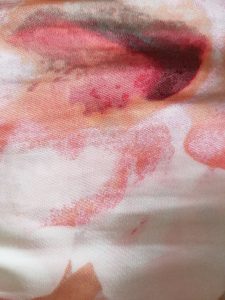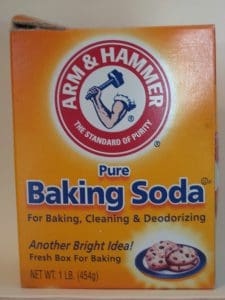Accidents happen, and sometimes they lead to blood stains on our clothes. Knowing how to get blood out of clothes is essential for maintaining the longevity and appearance of our garments. Blood stains can be stubborn and difficult to remove, but with the right techniques and some patience, you can successfully eliminate them. In this blog post, we will discuss the composition of blood stains, specific methods for removing blood stains from various fabrics, and preventive measures to avoid future stains.
Understanding Blood Stains

Blood is composed of cells, proteins, and iron-rich hemoglobin. When blood comes into contact with fabric, these components can bind to the fibers, making the stain difficult to remove. Different types of fabrics react differently to blood stains, with some being more susceptible to staining than others. Delicate fabrics, like silk or wool, may require different cleaning methods than more durable materials like cotton or polyester.
Pre-Treatment Steps
To successfully remove blood stains, it is crucial to act quickly. Fresh stains are much easier to remove than dried blood stains. As soon as you notice a blood stain, follow these pre-treatment steps:
1. Blot the excess blood with a clean cloth or paper towel, being careful not to spread the stain further. Avoid rubbing the stain, as this can push the blood deeper into the fabric fibers.
2. Rinse the stained area with cold water. Cold water is essential, as hot water can cause the proteins in the blood to set, making the stain even more difficult to remove.
Effective Methods for Removing Blood Stains
There are several methods to remove blood stains from clothes, ranging from using household items to specialized laundry products. Test each method on a small, inconspicuous area of the fabric first to ensure it does not cause damage or discoloration.
Using Household Items:
1. Hydrogen Peroxide: This medicine cabinet staple can help break down the proteins in blood stains. Apply a few drops of hydrogen peroxide to the stained area and let it bubble for a few minutes. Blot the area with a dry cloth or paper towel, then rinse with cold water. Repeat if necessary. Note that hydrogen peroxide can bleach some fabrics, so use caution and perform a spot test before using it on colored garments.

2. Salt and Cold Water: Mix two cups of cold water with one tablespoon of salt to create a cleaning solution. Soak the stained area in the solution for several hours, then gently rub the fabric together to help loosen the stain. Rinse with cold water and repeat if necessary.
3. Baking Soda: Make a paste by mixing equal parts baking soda and cold water. Apply the paste to the stained area and let it sit for several hours or until it dries. Use a soft-bristled toothbrush to gently scrub the dried paste away, then rinse the fabric with cold water.
4. Meat Tenderizer: The enzymes in meat tenderizer can help break down the proteins in blood stains. Mix one tablespoon of unseasoned meat tenderizer with two cups of cold water to create a cleaning solution. Soak the stained area in the solution for several hours, then rinse with cold water.
Using Laundry Products:
1. Stain Remover or Pre-Treatment Spray: Apply a laundry pre-treater or stain remover directly to the stained area, following the manufacturer’s instructions. Allow the product to sit for the recommended amount of time before washing the garment as usual. Check the stain before drying; if it remains, repeat the process.
2. Enzyme-Based Laundry Detergent: Enzyme-based liquid laundry detergents are designed to break down proteins in stains like blood. Wash the stained garment using cold water and enzyme-based detergent, then check the stain before drying. If it remains, repeat the process.
Professional Cleaning Services:
If the blood stain remains after trying the above methods, consider using a professional dry cleaner. They have access to specialized cleaning products and techniques that can effectively remove stubborn stains from delicate fabrics.
Tips for Specific Types of Fabrics

Delicate Fabrics (silk, wool, etc.): Avoid using harsh chemicals or scrubbing, as this can damage the fabric. Instead, try using a gentle stain remover or detergent specifically designed for delicate fabrics. If the stain remains, consult a professional dry cleaner.
Synthetic Fabrics (polyester, nylon, etc.): These fabrics can usually withstand stronger cleaning solutions and techniques. Test a small, inconspicuous area before using any cleaning product to ensure it does not cause damage or discoloration.
Natural Fabrics (cotton, linen, etc.): Many natural fabrics can be treated with the methods outlined above. However, some may require special care or professional cleaning, so always consult the garment’s care label before attempting stain removal.
Preventive Measures
To avoid future blood stains on your clothes, consider implementing the following preventive measures:
1. Wear an apron or smock when dealing with blood, whether it’s during cooking, first aid, or crafting.
2. Keep stain removal products on hand, so you can act quickly when a blood stain occurs.
3. Properly store and handle your clothes to minimize the risk of stains.
Final Thoughts: How to get blood out of clothes
Knowing how to get blood out of clothes is essential for maintaining the appearance and longevity of your garments. By understanding the composition of blood stains, acting quickly, and using the right cleaning methods, you can successfully remove blood stains from your clothes. Remember to always test cleaning products and techniques on a small, inconspicuous area of the fabric first, and consult a professional dry cleaner for delicate or stubborn stains. With these tips and tricks, you can keep your clothes looking their best, even in the face of unexpected accidents.
Other suggested articles:

